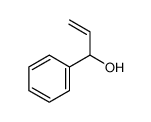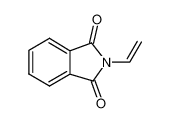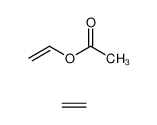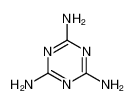| Product name | bromoethene |
|---|
| Product number | - |
|---|---|
| Other names | Vinyl bromide |
| Identified uses | For industry use only. Vinyl bromide is primarily used in the manufacture of flame retardant synthetic fibers. Its copolymer with vinyl chloride is also used for preparing films, for laminating fibers, and as rubber substitutes. |
|---|---|
| Uses advised against | no data available |
| Company | MOLBASE (Shanghai) Biotechnology Co., Ltd. |
|---|---|
| Address | Floor 4 & 5, Building 12, No. 1001 North Qinzhou Road, Xuhui District, Shanghai, China |
| Telephone | +86(21)64956998 |
| Fax | +86(21)54365166 |
| Emergency phone number | +86-400-6021-666 |
|---|---|
| Service hours | Monday to Friday, 9am-5pm (Standard time zone: UTC/GMT +8 hours). |
Gases under pressure: Compressed gas
Flammable gases, Category 1
Carcinogenicity, Category 1B
2.2 GHS label elements, including precautionary statements| Pictogram(s) | 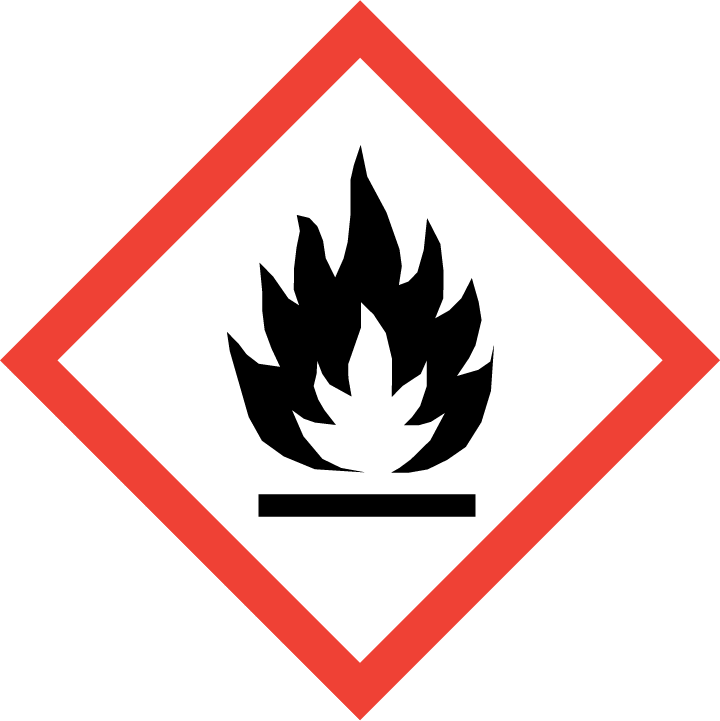 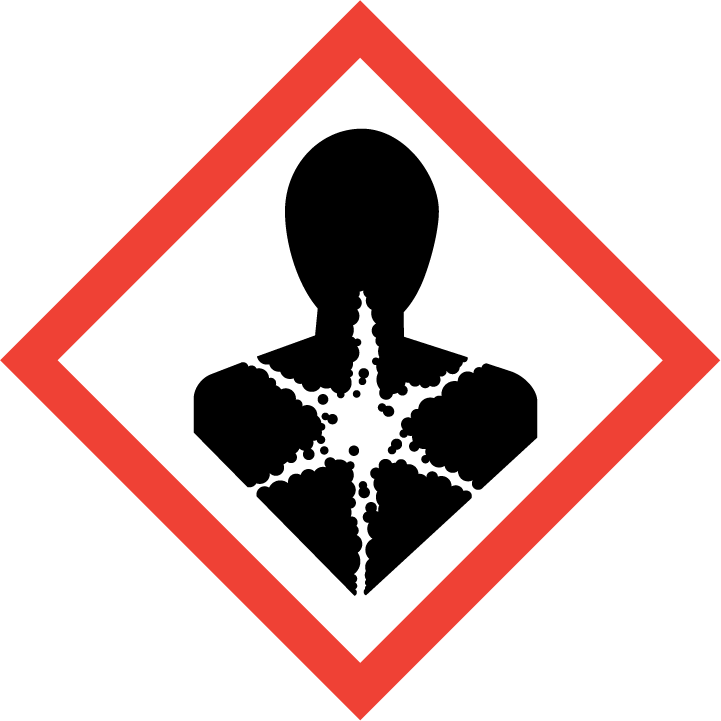 |
|---|---|
| Signal word | Danger |
| Hazard statement(s) | H220 Extremely flammable gas H350 May cause cancer |
| Precautionary statement(s) | |
| Prevention | P210 Keep away from heat, hot surfaces, sparks, open flames and other ignition sources. No smoking. P201 Obtain special instructions before use. P202 Do not handle until all safety precautions have been read and understood. P280 Wear protective gloves/protective clothing/eye protection/face protection. |
| Response | P377 Leaking gas fire: Do not extinguish, unless leak can be stopped safely. P381 In case of leakage, eliminate all ignition sources. P308+P313 IF exposed or concerned: Get medical advice/ attention. |
| Storage | P410+P403 Protect from sunlight. Store in a well-ventilated place. P403 Store in a well-ventilated place. P405 Store locked up. |
| Disposal | P501 Dispose of contents/container to ... |
none
3.Composition/information on ingredients 3.1 Substances| Chemical name | Common names and synonyms | CAS number | EC number | Concentration |
|---|---|---|---|---|
| bromoethene | bromoethene | 593-60-2 | none | 100% |
Consult a physician. Show this safety data sheet to the doctor in attendance.
If inhaledFresh air, rest. Refer for medical attention.
In case of skin contactON FROSTBITE: rinse with plenty of water, do NOT remove clothes.
In case of eye contactFirst rinse with plenty of water for several minutes (remove contact lenses if easily possible), then refer for medical attention.
If swallowedGive one or two glasses of water to drink. Refer for medical attention .
4.2 Most important symptoms/effects, acute and delayedExcerpt from ERG Guide 116P [Gases - Flammable (Unstable)]: Vapors may cause dizziness or asphyxiation without warning. Some may be toxic if inhaled at high concentrations. Contact with gas or liquefied gas may cause burns, severe injury and/or frostbite. Fire may produce irritating and/or toxic gases. (ERG, 2016)
4.3 Indication of immediate medical attention and special treatment needed, if necessaryBasic treatment: Establish a patent airway. Suction if necessary. Watch for signs of respiratory insufficiency and assist ventilations if necessary. Administer oxygen by nonrebreather mask at 10 to 15 L/min. Monitor for pulmonary edema and treat if necessary ... . Monitor for shock and treat if necessary ... . Anticipate seizures and treat if necessary ... . For eye contamination, flush eyes immediately with water. Irrigate each eye continuously with normal saline during transport ... . Do not use emetics. For ingestion, rinse mouth and administer 5 ml/kg up to 200 ml of water for dilution if the patient can swallow, has a strong gag reflex, and does not drool. Administer activated charcoal ... . Cover skin burns with dry sterile dressings after decontamination ... . /Bromine, methyl bromide, and related compounds/
5.Fire-fighting measures 5.1 Extinguishing media Suitable extinguishing mediaTO FIGHT FIRE, USE /CARBON DIOXIDE/, DRY CHEMICAL, OR WATER SPRAY.
5.2 Specific hazards arising from the chemicalExcerpt from ERG Guide 116P [Gases - Flammable (Unstable)]: EXTREMELY FLAMMABLE. Will be easily ignited by heat, sparks or flames. Will form explosive mixtures with air. Silane (UN2203) will ignite spontaneously in air. Those substances designated with a (P) may polymerize explosively when heated or involved in a fire. Vapors from liquefied gas are initially heavier than air and spread along ground. Vapors may travel to source of ignition and flash back. Cylinders exposed to fire may vent and release flammable gas through pressure relief devices. Containers may explode when heated. Ruptured cylinders may rocket. (ERG, 2016)
5.3 Special protective actions for fire-fightersWear self-contained breathing apparatus for firefighting if necessary.
6.Accidental release measures 6.1 Personal precautions, protective equipment and emergency proceduresUse personal protective equipment. Avoid dust formation. Avoid breathing vapours, mist or gas. Ensure adequate ventilation. Evacuate personnel to safe areas. Avoid breathing dust. For personal protection see section 8.
6.2 Environmental precautionsEvacuate danger area! Personal protection: chemical protection suit including self-contained breathing apparatus. Ventilation. Remove all ignition sources.
6.3 Methods and materials for containment and cleaning upPRECAUTIONS FOR "CARCINOGENS": A high-efficiency particulate arrestor (HEPA) or charcoal filters can be used to minimize amt of carcinogen in exhausted air ventilated safety cabinets, lab hoods, glove boxes or animal rooms ... Filter housing that is designed so that used filters can be transferred into plastic bag without contaminating maintenance staff is avail commercially. Filters should be placed in plastic bags immediately after removal ... The plastic bag should be sealed immediately ... The sealed bag should be labelled properly ... Waste liquids ... should be placed or collected in proper containers for disposal. The lid should be secured & the bottles properly labelled. Once filled, bottles should be placed in plastic bag, so that outer surface ... is not contaminated ... The plastic bag should also be sealed & labelled. ... Broken glassware ... should be decontaminated by solvent extraction, by chemical destruction, or in specially designed incinerators. /Chemical Carcinogens/
7.Handling and storage 7.1 Precautions for safe handlingAvoid contact with skin and eyes. Avoid formation of dust and aerosols. Avoid exposure - obtain special instructions before use.Provide appropriate exhaust ventilation at places where dust is formed. For precautions see section 2.2.
7.2 Conditions for safe storage, including any incompatibilitiesFireproof. Cool. Keep in a well-ventilated room. Separated from oxidants. Store only if stabilized.Keep container in a well-ventilated place.
8.Exposure controls/personal protection 8.1 Control parameters Occupational Exposure limit valuesNIOSH considers vinyl bromide to be a potential occupational carcinogen.
NIOSH usually recommends that occupational exposures to carcinogens be limited to the lowest feasible concentration.
Biological limit valuesno data available
8.2 Appropriate engineering controlsHandle in accordance with good industrial hygiene and safety practice. Wash hands before breaks and at the end of workday.
8.3 Individual protection measures, such as personal protective equipment (PPE) Eye/face protectionSafety glasses with side-shields conforming to EN166. Use equipment for eye protection tested and approved under appropriate government standards such as NIOSH (US) or EN 166(EU).
Skin protectionWear impervious clothing. The type of protective equipment must be selected according to the concentration and amount of the dangerous substance at the specific workplace. Handle with gloves. Gloves must be inspected prior to use. Use proper glove removal technique(without touching glove's outer surface) to avoid skin contact with this product. Dispose of contaminated gloves after use in accordance with applicable laws and good laboratory practices. Wash and dry hands. The selected protective gloves have to satisfy the specifications of EU Directive 89/686/EEC and the standard EN 374 derived from it.
Respiratory protectionWear dust mask when handling large quantities.
Thermal hazardsno data available
9.Physical and chemical properties| Physical state | colorless gas |
|---|---|
| Colour | Gas under normal atmospheric conditions, colorless liquid under pressure |
| Odour | Characteristic pungent odor |
| Melting point/ freezing point | -139ºC |
| Boiling point or initial boiling point and boiling range | 16ºC |
| Flammability | Flammable GasFlammable. |
| Lower and upper explosion limit / flammability limit | Lower Flammable limit: 9% by vol, higher flammable limit: 15% by vol |
| Flash point | 5ºC |
| Auto-ignition temperature | 472.22°C |
| Decomposition temperature | no data available |
| pH | no data available |
| Kinematic viscosity | 0.2393 cSt |
| Solubility | In water:insoluble |
| Partition coefficient n-octanol/water (log value) | log Kow= 1.57 |
| Vapour pressure | 1551 mm Hg ( 37.8 °C) |
| Density and/or relative density | 1.4933 |
| Relative vapour density | 3.8 (15 °C, vs air) |
| Particle characteristics | no data available |
no data available
10.2 Chemical stabilityStable under recommended storage conditions.
10.3 Possibility of hazardous reactionsA VERY DANGEROUS FIRE HAZARD WHEN EXPOSED TO HEAT OR FLAME.The vapour is heavier than air.VINYL BROMIDE is a light sensitive, peroxidizable monomer may initiate exothermic polymerization of the bulk material [Handling Chemicals Safely 1980.. p. 958]. It will react violently with oxidants.
10.4 Conditions to avoidno data available
10.5 Incompatible materials... Reacts violently with oxidants ... .
10.6 Hazardous decomposition productsWhen strongly heated, they emit highly toxic fumes of /hydrogen bromide/.
11.Toxicological information Acute toxicity- Oral: LD50 Rat oral (50% soln in corn oil) 500 mg/kg
- Inhalation: no data available
- Dermal: no data available
no data available
Serious eye damage/irritationno data available
Respiratory or skin sensitizationno data available
Germ cell mutagenicityno data available
CarcinogenicityEvaluation: No epidemiological data relevant to the carcinogenicity of vinyl bromide were available. There is sufficient evidence in experimental animals for the carcinogenicity of vinyl bromide. Overall evaluation: Vinyl bromide is probably carcinogenic to humans (Group 2A). In making the overall evaluation, the Working Group took into consideration that all available studies showed a consistently parallel response between vinyl bromide and vinyl chloride. In addition, both vinyl chloride and vinyl bromide are activated via P450 dependent pathway to their corresponding epoxides. For both vinyl chloride and vinyl bromide, the covalent binding of these compounds to DNA forms the respective etheno adducts. The weight of positive evidence for both compounds was also noted among the studies for genotoxicity, although the number and variety of tests for vinyl bromide were fewer.
Reproductive toxicityNo information is available on the reproductive or developmental effects of vinyl bromide in animals or humans.
STOT-single exposureno data available
STOT-repeated exposureno data available
Aspiration hazardno data available
12.Ecological information 12.1 Toxicity- Toxicity to fish: no data available
- Toxicity to daphnia and other aquatic invertebrates: no data available
- Toxicity to algae: no data available
- Toxicity to microorganisms: no data available
no data available
12.3 Bioaccumulative potentialAn estimated BCF of 3 was calculated for vinyl bromide(SRC), using a log Kow of 1.57(1) and a regression-derived equation(2). According to a classification scheme(3), this BCF suggests the potential for bioconcentration in aquatic organisms is low(SRC).
12.4 Mobility in soilThe Koc of vinyl bromide is estimated as 170(SRC), using a log Kow of 1.57(1) and a regression-derived equation(2). According to a classification scheme(3), this estimated Koc value suggests that vinyl bromide is expected to have moderate mobility in soil(SRC).
12.5 Other adverse effectsno data available
13.Disposal considerations 13.1 Disposal methods ProductThe material can be disposed of by removal to a licensed chemical destruction plant or by controlled incineration with flue gas scrubbing. Do not contaminate water, foodstuffs, feed or seed by storage or disposal. Do not discharge to sewer systems.
Contaminated packagingContainers can be triply rinsed (or equivalent) and offered for recycling or reconditioning. Alternatively, the packaging can be punctured to make it unusable for other purposes and then be disposed of in a sanitary landfill. Controlled incineration with flue gas scrubbing is possible for combustible packaging materials.
14.Transport information 14.1 UN Number| ADR/RID: UN1085 | IMDG: UN1085 | IATA: UN1085 |
| ADR/RID: VINYL BROMIDE, STABILIZED |
| IMDG: VINYL BROMIDE, STABILIZED |
| IATA: VINYL BROMIDE, STABILIZED |
| ADR/RID: 3 | IMDG: 3 | IATA: 3 |
| ADR/RID: I | IMDG: I | IATA: I |
| ADR/RID: no | IMDG: no | IATA: no |
no data available
14.7 Transport in bulk according to Annex II of MARPOL 73/78 and the IBC Codeno data available
15.Regulatory information 15.1 Safety, health and environmental regulations specific for the product in question| Chemical name | Common names and synonyms | CAS number | EC number |
|---|---|---|---|
| bromoethene | bromoethene | 593-60-2 | none |
| European Inventory of Existing Commercial Chemical Substances (EINECS) | Listed. | ||
| EC Inventory | Listed. | ||
| United States Toxic Substances Control Act (TSCA) Inventory | Listed. | ||
| China Catalog of Hazardous chemicals 2015 | Listed. | ||
| New Zealand Inventory of Chemicals (NZIoC) | Listed. | ||
| Philippines Inventory of Chemicals and Chemical Substances (PICCS) | Listed. | ||
| Vietnam National Chemical Inventory | Not Listed. | ||
| Chinese Chemical Inventory of Existing Chemical Substances (China IECSC) | Not Listed. | ||
| Creation Date | Aug 14, 2017 |
|---|---|
| Revision Date | Aug 14, 2017 |
- CAS: Chemical Abstracts Service
- ADR: European Agreement concerning the International Carriage of Dangerous Goods by Road
- RID: Regulation concerning the International Carriage of Dangerous Goods by Rail
- IMDG: International Maritime Dangerous Goods
- IATA: International Air Transportation Association
- TWA: Time Weighted Average
- STEL: Short term exposure limit
- LC50: Lethal Concentration 50%
- LD50: Lethal Dose 50%
- EC50: Effective Concentration 50%
- IPCS - The International Chemical Safety Cards (ICSC), website: http://www.ilo.org/dyn/icsc/showcard.home
- HSDB - Hazardous Substances Data Bank, website: https://toxnet.nlm.nih.gov/newtoxnet/hsdb.htm
- IARC - International Agency for Research on Cancer, website: http://www.iarc.fr/
- eChemPortal - The Global Portal to Information on Chemical Substances by OECD, website: http://www.echemportal.org/echemportal/index?pageID=0&request_locale=en
- CAMEO Chemicals, website: http://cameochemicals.noaa.gov/search/simple
- ChemIDplus, website: http://chem.sis.nlm.nih.gov/chemidplus/chemidlite.jsp
- ERG - Emergency Response Guidebook by U.S. Department of Transportation, website: http://www.phmsa.dot.gov/hazmat/library/erg
- Germany GESTIS-database on hazard substance, website: http://www.dguv.de/ifa/gestis/gestis-stoffdatenbank/index-2.jsp
- ECHA - European Chemicals Agency, website: https://echa.europa.eu/













